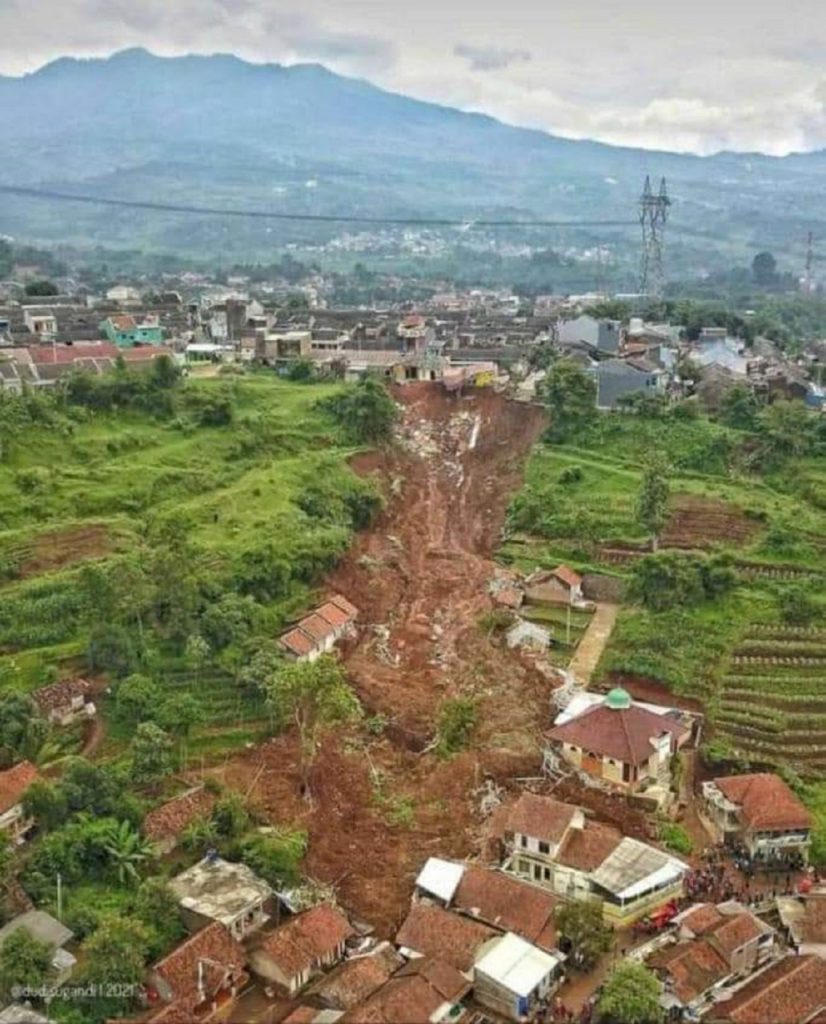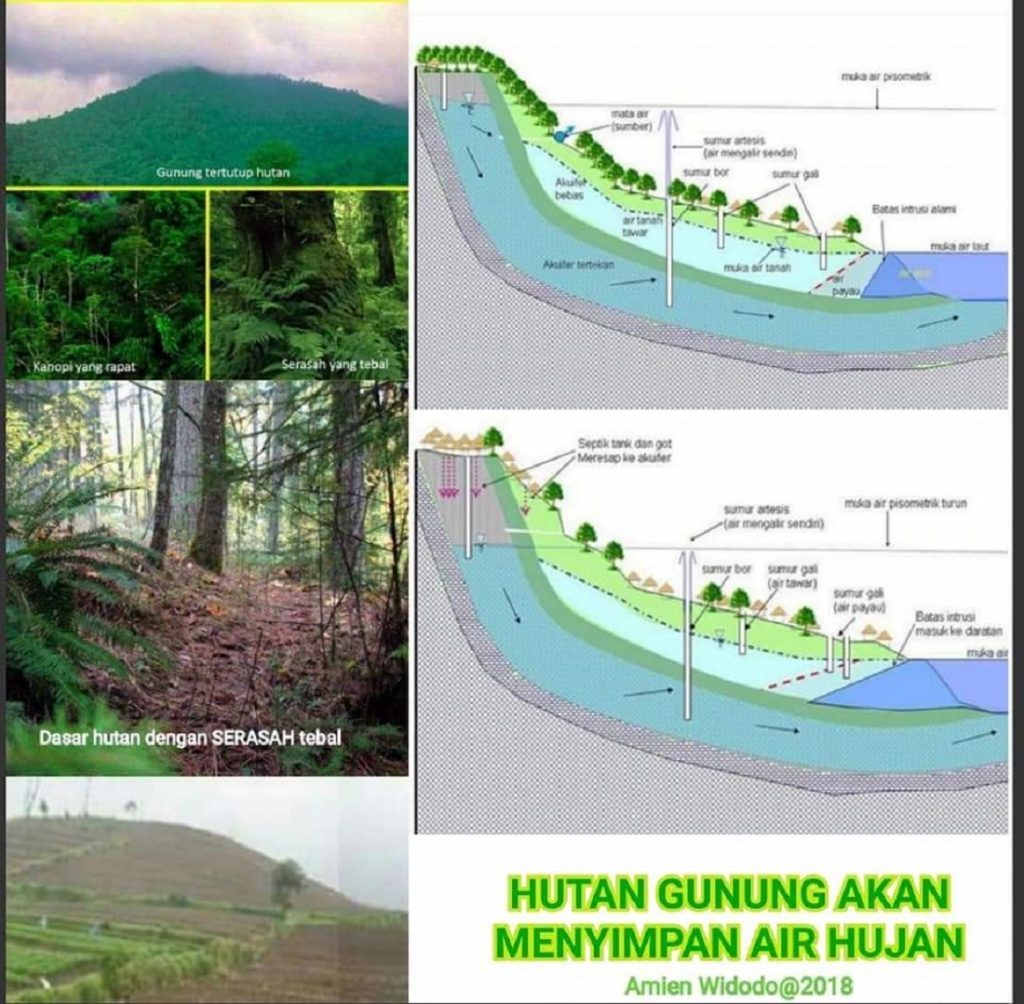ITS Researcher Perspective About the Causes of Landslides

A portrait of landslides that occurred in Cimanggu, Sumedang, West Java
ITS Campus, ITS News – At the beginning of this year, heavy rain flushed Indonesia in turns from Sabang to Merauke. At the same time, rain is often blamed as the cause of floods and landslides that hit the country in a row, recently. Researchers from the Research Center for Disaster Mitigation and Climate Change (MKPI) Institut Teknologi Sepuluh Nopember (ITS) gave their point of view, why rain is not to blame forever.
Dr. Ir Amien Widodo, a senior researcher at MKPI ITS told how the rain was often cited as the cause of landslides and floods. When it rains, water will flow on the ground and provide friction which can cause erosion. “As long as the rain continues to fall, during that time the volume of surface water will get bigger,” continued the lecturer at the ITS Geophysical Engineering Department.
This flowing surface water is known as a flood. Besides, according to Amien, if the soil on the slope is wet which increases the weight of the soil on the slope, landslides can occur due to a decrease in the binding power (cohesion) of the soil on the slope.
Continued Amien, the water that erodes the land if it continues to flow will cause mudflows or turn into flash floods. “However, it does not mean that all land on the slopes is unstable and ready for landslides,” he reminded.
Amien said that a stable slope could become unprepared for landslides due to several triggers. “There are at least five causes and triggers for the soil to become unstable and ready for landslides,” he said. That is why he said rain was not the only cause of landslides.
First, reducing vegetation, both legally and illegally. The roots of the tree can secrete enzymes that help with rock weathering. But also, tree roots are responsible for gripping the clay which gets thicker due to the weathering process. The collapse of many trees due to logging, burning, or strong winds makes the land less resistant to landslides.
Second, cutting the lower slope of the land. “There are many reasons behind this slope cutting,” he said. Naturally, the lower slopes can be cut because they are eroded by rivers. However, it is not uncommon for slopes to be cut made for purposes of mining, tunneling, cutting roads, and building houses.

Dr. Ir Amien Widodo MSi, a lecturer at the Department of Geophysical Engineering and Researcher from the ITS MKPI Research Center
Due to these things, the slope angle of the slope can increase and result in the soil layer getting closer to the critical point (easily landslides). “Besides, the soil layer will also get closer to the critical point when the additional load adds to the weight of the soil layer on the slope,” he explained.
This additional load can naturally occur due to the accumulation of layers above the soil layer on the slopes. However, according to Amien, the most part is due to human activity, making this layer a place for residential development or simply a garbage dump.
Furthermore, the addition of water can also trigger instability in the soil layer. Not only rainwater, pond water, and rice fields, or septic-tank seepage in residential areas can also increase surface water which can cause the soil binding capacity to decrease.
“Finally, the soil becomes unstable due to the possibility of vibrations which can change and untie the bonds between soil grains,” he said. The vibration in question can arise due to earthquakes or artificial vibrations such as bombing, passing heavy vehicles, and so on.
This increasingly unstable land will become vulnerable to landslides because of the appearance of soil cracks from the top to the slopes that can become a medium for water flowing or water absorption. Cracks that store a lot of water, of course, experience additional loading and can trigger landslides to occur immediately. For this reason, the role of the government here is very much needed to restore the function of the mountain top area.
In a massive, systemic, and structured manner, it can be seen through platforms such as Google Maps that the area has changed its function a lot. According to Amien, the government should make certain regulations with a focus on returning these protected forest areas and absorption areas.
“Apart from that, as a good citizen, it would be wise to support the government’s efforts, starting by not piling up trash where it shouldn’t be,” he said. Especially in this rainy season, Amien appealed to the public to raise awareness and not panicking. (qaf/ris/ITS Public Relations)

Illustration of mountain forest and its function transition scheme
Related News
-
ITS Wins 2024 Project Implementation Award for Commitment to Gender Implementation
ITS Campus, ITS News —Not only technology-oriented, Institut Teknologi Sepuluh Nopember (ITS) also show its commitment to support gender
January 26, 2021 18:01 -
ITS Professor Researched the Role of Human Integration in Sustainable Architecture
ITS Campus, ITS News –The developing era has an impact on many aspects of life, including in the field
January 26, 2021 18:01 -
ITS Sends Off Group for Joint Homecoming to 64 Destination Areas
ITS Campus, ITS News — Approaching Eid al-Fitr, the Sepuluh Nopember Institute of Technology (ITS) is once again facilitating academics who want
January 26, 2021 18:01 -
ITS Expert: IHSG Decline Has Significant Impact on Indonesian Economy
ITS Campus, ITS News — The decline in the Composite Stock Price Index (IHSG) by five percent on March 18,
January 26, 2021 18:01
